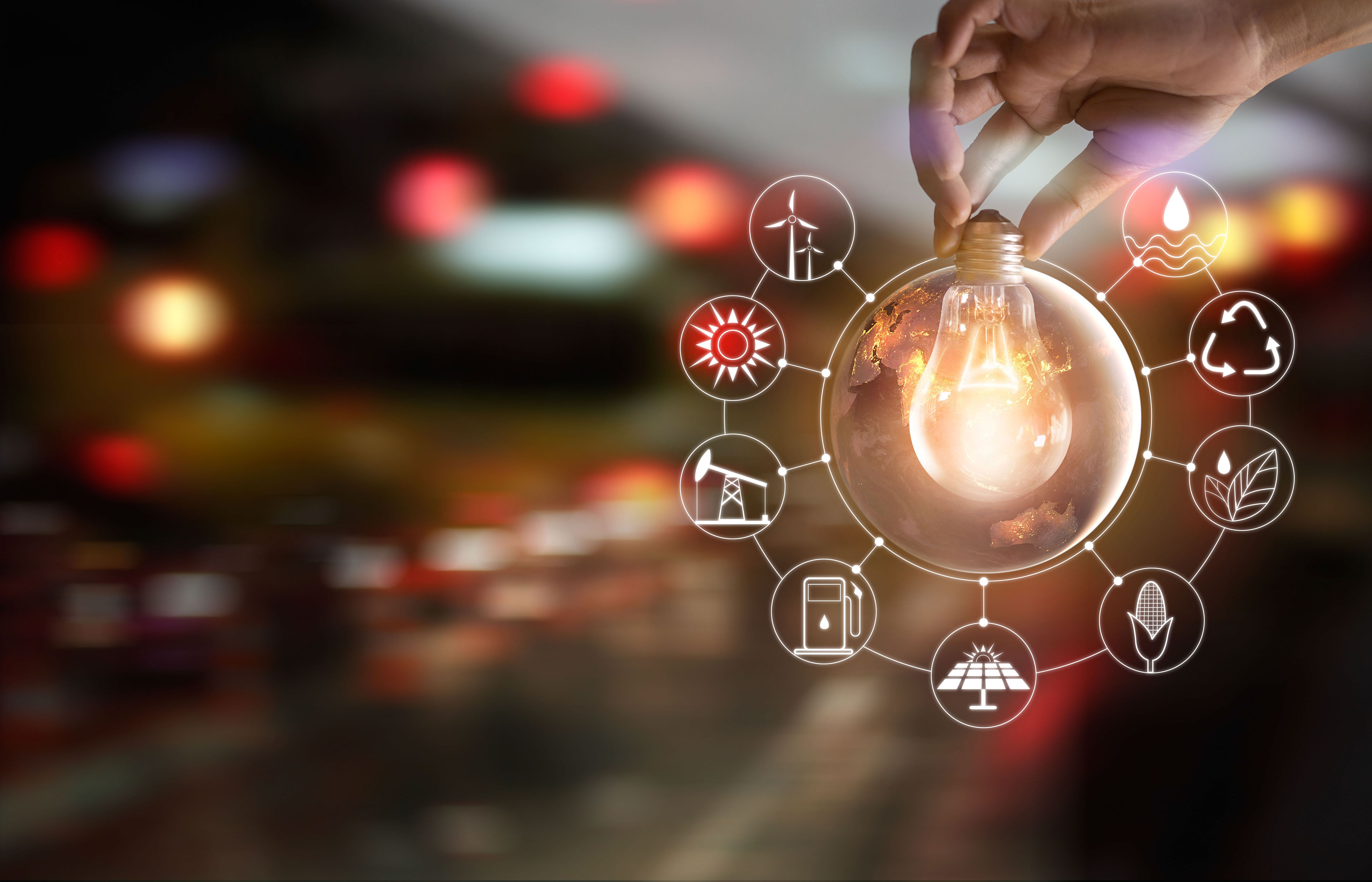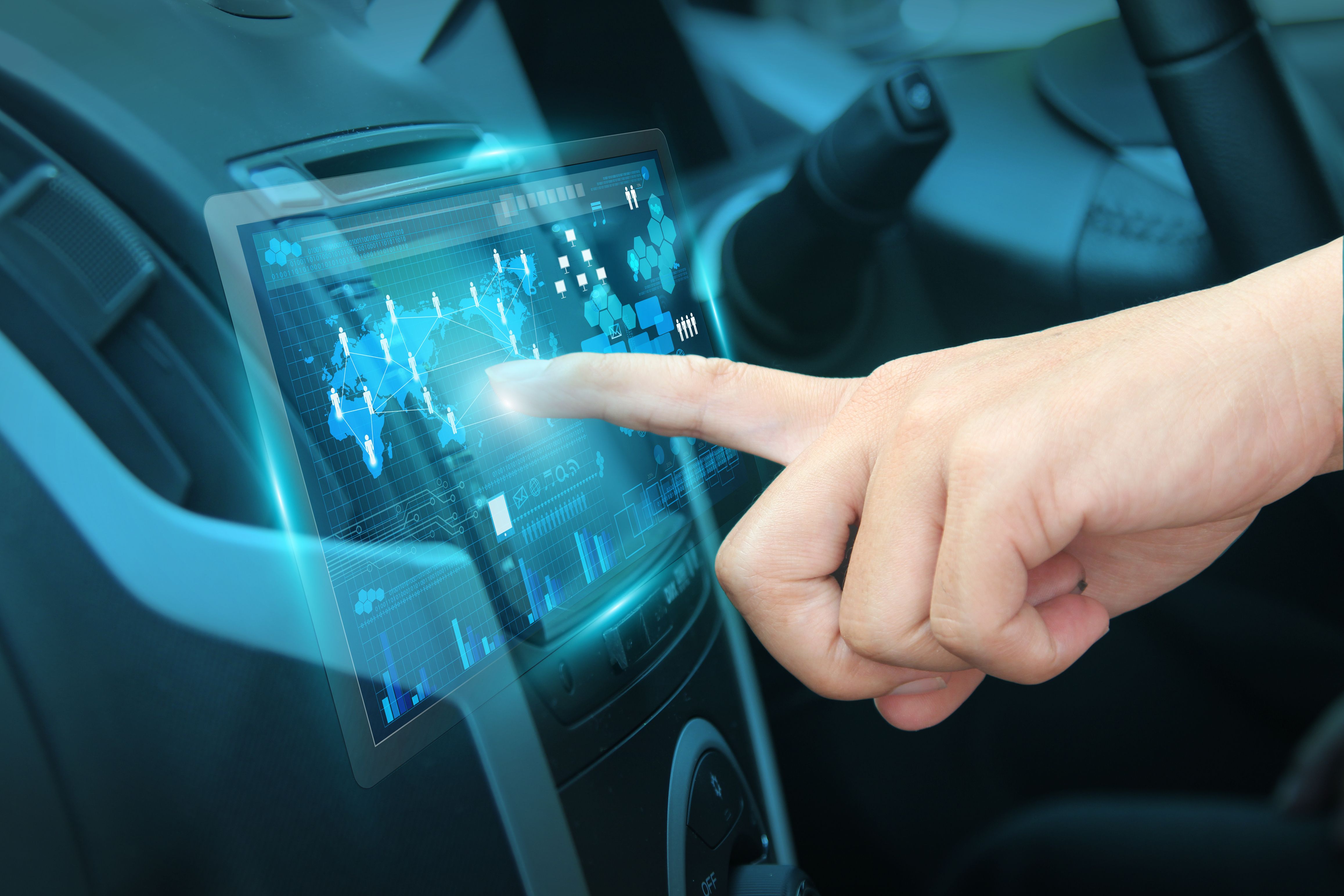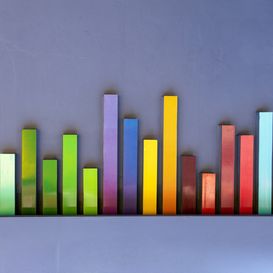

1. Achievements and improvement priorities

Through the ITEA innovation programme, ITEA projects are always looking for improvement of the current State-of-the- Art, such as in production processes, the alignment of information streams and energy optimisation. Via a supportive coaching approach, ITEA helps partners to get the most out of their project participation. In line with this, the ITEA programme also continuously evaluates its own processes and activities and annually defines improvement priorities to enhance itself.
In this report, we take you through our 2022 activities, achievements and the impact of the ITEA programme.
1.1 ITEA project impact
In ITEA, achievements and impact are created in a trusted environment and this trust has been felt by ITEA’s Community and Public Authorities for 25 years now. In turn, the achievements and the commitment of the ITEA Community justify and reinforce this trust.
Each year, remarkable results are delivered through bottom-up ITEA projects, and an impressive impact on society, the economy and everyday life was again created in 2022 by the ITEA project partners with the support of the national Public Authorities. As impact is one of ITEA’s main ambitions, we have been gathering remarkable project Impact stories since 2017, and a total of 36 stories have already been published.
Hereafter, you can discover the highlights of four outstanding projects that have recently been added to the long list of ITEA Impact stories. The full (overview of) Impact stories can be found online via https://itea4.org/impact-stream.html. There, you can also create your own personal ITEA Impact stream online by choosing the challenges, countries and topics of your interest.
PS-CRIMSON Impact story



Nowadays, cities are digitalising more and more services, like data gathering for mobility, safety and communication with citizens. This data is required to be able to govern an increasingly complex and dynamic city. However, authorities still need to tackle information fragmentation caused by separated data per department and a lack of common platforms and toolsets. PS-CRIMSON developed a unique 3D smart digital model that combines all of the gathered data on one common platform. With this platform, public safety and disaster management can be improved, as pilot projects in Eindhoven and Vancouver have shown.
Impact highlights
- Thanks to PS-CRIMSON, a city representative responsible for video surveillance can now work with one single screen and take a virtual walk through a 3D model of the city and see everything which is happening in a single view. This facilitates his/her work a lot compared to the previous situation where (s)he needed to monitor up to 60 live screens in the control room and handle dozens of calls during the day from local citizens and officers regarding suspicious events.
- Thanks to AI image technology developed by project partner Eindhoven University of Technology, the search engine can determine where an incident is taking place to an accuracy of 10 meters when someone sends a mobile picture to the police.
- Thanks to the 3D smart model of Esri Canada, developed within PS-CRIMSON, city representatives can now see the effects of an earthuake down to the level of interior units in the damaged buildings and the different levels of flooding that would follow.
- PS-CRIMSON project partners won a tender for Smart City Hilversum, which is now being deployed to create insights on traffic.
- ViNotion has sold PS-CRIMSON results to other cities, including Amsterdam, ‘s-Hertogenbosch and Bruges.
- Atos is in the lead for a smart city project in Germany.
MOS2S Impact story





Traditional media is losing ground to personalised experiences. Children of today choose what to watch at the time they want and they even produce thousands of pieces of content on their own each day. This trend in the entertainment business can also be seen in society, where city representatives no longer make decisions on their own. Everybody wants to be involved, or at least can be. The MOS2S project took the outdated broadcasting concept to the next level, adding a completely different dimension with features such as instant live broadcasting with the aim of capturing as much sensor data as possible and using this data in various applications in order to eventually enhance the experiences of people.
Impact highlights
- Thanks to MOS2S, for the first time in the world, a football match in the Johan Cruijff ArenA was broadcast in real time with only a 0.3-second delay from the pitch in Amsterdam to a viewing area in South Korea. Combining new Ultra-Wide Vision technology with a super-fast data connection enabled a crowd of South Koreans to experience the live event in an unmatched way.
- As the first stadium in the world to adopt the innovative technologies developed in the MOS2S project, the Johan Cruijff ArenA is boosting its reputation for innovation and opening up a new consultancy market, in turn making the technology accessible to new and existing sports hubs.
- Since the MOS2S project, Kiswe has been working with multiple sports leagues and entertainment and media companies worldwide, like K-pop group BTS, NBA, Universal Music Group and the Tour of Flanders to name a few. In 2021, Kiswe was named one of the World’s Most Innovative Companies by Fast Company and the company has grown by more than 70 FTE worldwide since their participation in the MOS2S project.
- Game On’s video technology has been licensed to 25 European clubs with a revenue of almost EUR 700 thousand for GameOn in 2019 (versus roughly EUR 80 thousand in 2016).
- The Inmotio Performance Centre is being rolled out for all 18 teams of the Dutch Eredivisie, potentially leading to millions of users following completion.
SPEAR Impact story






By helping companies to optimise their energy usage, SPEAR enables them to manage resources more effectively, reduce their energy consumption and costs significantly and increase their productivity in a sustainable manner. To achieve this, SPEAR used real device-provided simulation models to produce highly accurate forecasts for the energy consumption of industrial production processes, developed optimisation algorithms and created a flexible and highly generic optimisation platform.
Impact highlights
- The SPEAR project allows for a greater uptake of renewable energies (such as solar and wind), which were previously difficult to optimise on a large scale due to their weather dependency. This gives SPEAR a vital role in reducing CO2 emissions and slowing the speed of climate change throughout society as a whole.
- Through the smart selection of energy sources, the smart adaptation of process-relevant parameters and the reduction of power peaks, SPEAR has been able to reduce energy costs by roughly 10%.
- The SPEAR project outcomes have provided ÅF with a unique selling point for its service over other competitors, allowing them to receive more orders, which in turn increases the value of their turnover.
- Thanks to the developments in SPEAR, Sensing & Control Systems has three new industrial customers and was able to hire one additional staff member. Sensing & Control Systems has also incorporated the Functional Mock-up Interface (FMI) industrial standard, which increased their reliability and reputation.
- For Reeb-Engineering, the knowledge gained in SPEAR has opened up a completely new field of work in virtual commissioning for a wide range of industrial applications and thus a new business area that is becoming increasingly popular. After the completion of the project, they hired one new employee.
- Thanks to its great achievements, SPEAR received the Eureka Innovation Award for Best Sustainability Innovation during the 2022 Eureka Global Innovation Summit.
APPSTACLE Impact story





In the automotive domain, there is an increasing demand for software related to services. Although high-end cars now contain hundreds of millions of lines of code, development takes place in silos. To meet consumer needs at this high level of complexity while avoiding ‘walled’ proprietary solutions from a few monopoly players, a secure, open car-to-cloud and cloud-to-car platform is needed. APPSTACLE has created such a platform, connecting cars and transportation vehicles to the cloud using hybrid communication technologies for V2X (vehicle-to-everything) communication. Eclipse facilities have been used to build an open ecosystem in which security, privacy and identity requirements can be met, allowing the platform to be used in a wide range of vehicles.
Impact highlights
- In November 2019, APPSTACLE launched the first release of the Eclipse KUKSA platform that unifies the technologies across the vehicle, IoT, cloud and security domains to provide an open-source ecosystem to developers which addresses the challenges of the electrified and connected vehicle era.
- KUKSA shows large companies that there is more to be gained from sharing data than from protecting it within proprietary solutions. As more vehicles become connected, more applications and services will emerge. Companies can therefore enhance the business domain while increasing the size of their own share.
- In the research and education domain, KUKSA is currently shaping itself towards a de facto mobility research platform for managing data around data-intensive transport, smart mobility and vehicle, driver & passenger use-cases.
- APPSTACLE has so far played a role in 10 Master’s of Science and 14 PhDs across Europe. KUKSA also has an important role as a platform for live demonstrations and university student exercises around software-defined vehicle concepts and technologies around cloud & edge computing and continuous/secure software deployments in the automotive domain.
- Ericsson has been using the knowledge and connections resulting from APPSTACLE for their software R&D transformation to open-source software. A separate Ericsson-owned open-source software development company has been established in Finland, which is one of their first subsidiaries.
1.2. Results of the 2022 ITEA improvement priorities
As part of our annual quality process, several important improvement priorities were defined in collaboration with the ITEA Board in order to keep the ITEA programme strong and aligned with its goals and the innovation landscape. Below, you can find the 2022 improvement priorities along with their current statuses.
1.2.1. Participation in ECP groups (CC, CC Support Group) that will shape the future of the Clusters
The bodies that have been created for the governance and operation of the ECP (Eureka Clusters Programme) have continued their activities in 2022. The involvement and contribution of ITEA and its industrial members has taken place via the Clusters Committee (CC) and the CC Support Group (CC SG). The CC has not yet found a new Chair, so there has been a triumvirate consisting of industry representatives from ITEA, CELTIC-NEXT and Xecs. Besides participating in these bodies, ITEA took an active role in the InterCluster Operating Group (ICOG) in which the Eureka Clusters organise and align on collaborative topics and activities.
1.2.2. Selective participation in Joint Calls: improving the balance between cost/effort and the outcome of Joint Calls
As included in the 2021-2022 Annual Operating Plan (AOP) for the ECP, the launch of a Joint Call on Sustainability has been organised by the Eureka Clusters. In cooperation with Xecs, ITEA has taken the lead in the Joint Call management. All submission and evaluation processes were executed in 2022 and 11 projects have been labelled in total, of which four projects have chosen ITEA as the main Cluster and four projects have chosen ITEA as the secondary Cluster. Overall, the size of the Call is relatively small with a total cost of €26.9 M. This leads to the conclusion that the cost and efforts of Joint Calls are not yet in balance with their outcomes and results.
The preparation of any Joint Call is not (yet) included within the 2022-2023 AOP.
1.2.3. Evaluating rules, regulations and agreements regarding the ECP, Joint Call(s) and Cluster Cooperation and preparing ICT for Joint Calls
During 2022, the first experiences were gained with agreements between the Clusters and a Joint Eureka Clusters Call website was set up, based on the ITEA IT system, for the submission of the Joint Sustainability Call Project Outlines and Full Project Proposals.
In addition, CELTIC-NEXT and ITEA have worked on a common PA portal in which all Eureka Clusters project data is shared. Furthermore, Clusters have made a start on the sharing of costs related to the Joint Call and the project management of Joint Calls. Based on an evaluation of this, a continuation or adaptation of these agreements will be determined in the first half of 2023.
1.2.4. Successful ITEA bottom-up Calls in the new ECP
On 13 September, ITEA Call 2022 was launched in conjunction with the ITEA PO Days 2022 in Helsinki. By the deadline of 15 November, 32 Project Outlines had been submitted with a total of 3180 PY. These numbers were significantly higher than those of ITEA Call 2021 (23 POs and 2572 PY). On 19 December, 24 projects with a total effort of 2908 PY were invited to submit a Full Project Proposal (FPP). The deadline for the submission of these FPPs is 16 February 2023.
1.2.5. Continuing customer orientation by exploring other possible topical events
Although we did not participate in an external thematical fair, we continued the customer orientation by setting up an online Smart Systems Engineering workshop, a Smart Health customer workshop and holding Smart City (SCAB) and Cyber Security (CySAB) Advisory Board meetings. More information about these activities can be found in Chapter 4.
1.2.6. Continued efforts (including KPIs) on:
-
Minimising the time between the idea and the project start in the ECP
This is a very important KPI which has been continuously emphasised during the meetings with the Public Authorities and ITAC or during the Eureka Network meetings because it can (potentially) have a significant effect on the size and number of projects that will start within a specific Call. -
Expanding the ITEA programme in new countries that participate in the ECP
Several contacts have been made and meetings have taken place between the ITEA Presidium and new countries that will become (potential) participants in the ECP. The most important ones are the United Kingdom (£5 M allocated for ITEA Call 2022), Singapore, Switzerland, Israel and Denmark. -
Expanding the ITEA Board
The ITEA Board proudly welcomed Canon Production Printing Netherlands B.V. (hereafter Canon) as a new member during the Board meeting of 1 December in Stockholm. Canon is the second Dutch participant of the ITEA Board. Unfortunately, Enerim from Finland decided to leave the Board in 2022. -
Expanding the ITEA Impact stream
Also in 2022, four new ITEA Impact stories were added to the online ITEA Impact stream, showing strong results achieved in different domains, pushing the Digital Transition and improving customer satisfaction. PS-CRIMSON tackled information fragmentation in cities by developing a unique 3D smart digital model that combines all of the gathered data in one common platform, while MOS2S took the outdated broadcasting concept to the next level, adding a completely different dimension with new features. SPEAR took up the challenge to enable companies to manage resources more effectively in order to reduce their energy consumption and costs significantly and increase their productivity in a sustainable manner and APPSTACLE has created a platform connecting cars and transportation vehicles to the cloud using hybrid communication technologies for vehicle-to-everything (V2X) communication. More information about these stories can be found in Section 1.1. -
Setting up press approach in cooperation with partners
Like in recent years, ITEA Communications worked together with the project partners of the ITEA Award-winning projects to create four press releases and strengthen dissemination: The OPTIMUM project, which won the Exceptional ITEA Award of Excellence, was particularly well promoted in other media. More information about this can be found in Section 4.4.
1.2.7. High-level KPIs
The ITEA Office has a Quality Management System (QMS) in place; since April 2014, this QMS has been ISO9001:2008-certified and, since April 2017, the QMS of the ITEA Office has met the requirements of the new ISO 9001:2015 standard. As part of this QMS, several high-level KPIs have been defined for ITEA. In 2022, ITEA achieved the following scores for these high-level KPIs:
| Strategic leadership | Target 2022 | Realised 2022 |
|---|---|---|
| Forecast for funded Call size of ITEA Call 2021 | > €110 m | €65-85 m |
| Time from idea to project start of ITEA Call 2021 | <12 months | 19 months (estimated) |
| Hit rate ITEA 3 Call 7 | >70% | 50% |
| Average quality of events (smart engineering technical workshop, customer workshop, PO Days) | >3.5 | 4.0 |
In this annual report, the sections 3.1 ITEA Programme size, 3.2 ITEA Calls progress and 4.2 ITEA Events give an explanation and more details on these KPIs and their values in 2022.
1.3. ITEA improvement priorities 2023
To continuously enhance the ITEA programme, improvement priorities are defined on a yearly basis. For the upcoming year, the following improvement priorities have been defined.
1.3.1. Maintain/preserve ITEA bottom-up Calls in the ECP
First of all, 2022 was focused on organising successful physical PO Days where the ITEA Community could finally meet face-to-face once again after three years. The success and participation were regarded as an important sign of the strength and cohesiveness of ITEA, with high-quality proposals.
In 2023, there will also be a strong focus on the launch of the next ITEA Call, showing evidence that the bottom-up Calls are the essential ingredient for the vitality of ITEA that need to be continued and improved over the coming years.
1.3.2. Increase knowledge and awareness of ITEA, its projects and their impact among stakeholders
To maintain and increase support from our stakeholders, it is of high importance that the results and impacts of projects are well-known among them. Dedicated efforts will therefore be made to increase awareness and knowledge of ITEA and its projects. Actions towards Public Authorities, dedicated country pages and Project Benefit stories will be part of this. The actions will be executed in close cooperation with Board companies.
1.3.3. Mobilising new income sources and funding opportunities
To cope with the current trends of decreasing Call sizes and the related contribution income, ITEA will search for new opportunities to enlarge the funding of projects, plus new sources of income. This could possibly take the form of launching dedicated Calls that offer collaboration opportunities for companies from specific sectors of specific countries.
1.3.4. Continued efforts on:
-
Getting the overall ITEA Call size back towards at least €120 M
This KPI has become more challenging in recent years due to decreasing funding levels, specifically for ITEA 3 Call 6. Despite some improvements in the following ITEA 3 Call 7 and ITEA Call 2021, continued efforts are necessary to get the Call size back towards at least €120 M, which is essential to keeping ITEA at its current operating level. The ITEA Presidium developed an action plan to pro-actively approach Board companies and Public Authorities for increased support for ITEA. -
Participating in the ECP Groups that govern the ECP execution
ITEA will continue to participate in the different ECP Groups: the Clusters Committee and the CC Support Group. Through the ICOG, there will be close contact with the Central Coordinating Functions (CCFs), for which the CCF PA will be the direct liaison with the Public Authorities Committee (PAC) and PAC Support Group of the ECP. In 2023, special attention will be given to the midterm review for the Eureka Clusters after two years of ECP. This will also be the moment that the Clusters have to apply for continuation of their EPC Cluster label for the following four years. -
Continuing customer orientation (Advisory Boards, customer workshop, thematic
webinars)
ITEA will organise another customer-oriented workshop in 2023 and Smart cities will be the theme for this year. In addition, we will continue to work on the Smart City Advisory Board and Cyber Security Advisory Board portals. Finally, we will explore opportunities to bring together several stakeholders on smart agriculture as this topic is becoming more and more prominent in the ITEA Calls. -
Minimising the time between the idea and the project start in the ECP
To improve the processes of the Clusters, they have been reorganised into the new Eureka Clusters Programme, which should lead to better and clearer funding decisions more quickly. This applies to the Joint Calls as well as to the ITEA bottom-up Calls. The importance of shortening the time between the project idea and the project start is recognised by the participating ITAC members. For both the bottom-up ITEA Calls and the Joint Eureka Clusters Calls, we are striving for improvements and targeting a time-to-project of 12 months. -
Expanding the ITEA programme in new countries that participate in the ECP
Eureka has a big network of participating countries and is continuously investing in participation by new countries. The Joint Calls, where PAs also have a voice in choosing the subject, are a strong tool for attracting new countries and familiarising them with the Clusters. These new countries can then more easily be approached and involved in ITEA’s bottom-up Call. For example, Singapore participated in the 2020 Joint AI Call preparations and is now involved in a project within ITEA Call 2021. Luxembourg is participating in the Eureka Clusters Sustainability Call and is potentially interested in supporting upcoming ITEA Calls. Meetings and an event are scheduled to stimulate participation by Luxembourgish companies. -
Expanding the ITEA Board
In 2023, we will continue to look for strong candidates to strengthen the ITEA programme and software innovation in general. As in previous years, we aim to expand the ITEA Board with two more companies. -
Expanding the ITEA Impact stream
As in past years, ITEA will continue its efforts to highlight and promote the strong outcomes of ITEA projects. For 2023, a goal has been set to publish at least four new ITEA Impact stories. -
Maintaining operational quality, continuing to involve stakeholders in improving the
quality and continuing the ISO 9001 certification
The high quality of ITEA’s activities is one of the unique characteristics of the ITEA Office. This is expressed by the high level of stakeholder satisfaction and appreciation of our activities. This is part of ITEA’s USPs and an important ingredient that leads to successful outputs and impacts of ITEA projects. The quality will be maintained and profiled in 2023, adding to the legitimation of the support from the Public Authorities for our next Call and projects.

Other chapters
Use the arrows to view more chapters

2. Positioning and ECP activities
Positioning of Eureka, the ECP and ITEA and ECP activities and events

Appendix A. Call statistics per year and per country
Participation in person-years per Call and per country per year





